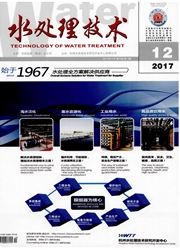

 中文摘要:
中文摘要:
研究了芦苇人工湿地对垃圾渗滤液中氮污染物的去除,并探讨了芦苇生长和各部分氮的分布。结果表明,在进水水力负荷为0.02m.3m-.2d-1的条件下,湿地中芦苇6至8月份生长迅速,生物量极大值出现在8月底,为573.6g.m-2。整个生长周期内,芦苇地上部分氮吸收量明显大于地下部分,且芦苇地上部分TN含量均高于同期地下部分。芦苇地上部分TN吸收量与其生物量有很好的正相关性,2者最大值均出现在8月底,此时收割芦苇可从湿地去除TN19.82 g.m-2,约占整个湿地去除TN的9.28%,因此,通过适时收割芦苇能发挥芦苇人工湿地去除渗滤液中TN的作用。
 英文摘要:
英文摘要:
The nitrogen removal capacity of reeds in wetland was studied,and the growth and distribution of nitrogen of the reeds were explored in this paper.The results showed that under the conditions of 0.02 m·d-1 of water loading,the reeds on wetland grew rapidly from June to August,the total biomass of reeds reached the highest in late August,which is 573.6 g·m-2.During the whole growth stages,the absorption of nitrogen in aboveground parts was significantly greater than underground parts,and total nitrogen(TN) content in aboveground parts was higher than underground parts during the same period.The aboveground nitrogen absorption had a close positive correlation with its biomass,both the maximum had occurred in later August.It can remove 19.82 g·m-2 nitrogen in the wetlands by harvesting reeds at this time,accounting for 9.28% of total nitrogen removal rate of leachate.It is suggested that it is a better method to remove the nitrogen from the wetlands by a timely reeds harvest.
 同期刊论文项目
同期刊论文项目
 同项目期刊论文
同项目期刊论文
 期刊信息
期刊信息
